The 5-Step Network Security Audit Every Small Business Should Do Quarterly
Key Takeaway: Small businesses face increasingly sophisticated cyber threats but often lack dedicated IT security teams. A systematic quarterly 2-hour security audit can identify vulnerabilities before they become expensive problems, helping protect your business and customer data.
Table of Contents
- 1 Why Quarterly Security Audits Are Essential
- 2 The Complete 5-Step Security Audit Process
- 3 Creating Your Quarterly Security Calendar
- 4 Recognizing When Professional Help Is Needed
- 5 Frequently Asked Questions
- 5.0.1 How long should a quarterly security audit take?
- 5.0.2 What if I discover security issues during the audit?
- 5.0.3 Should I perform this audit myself or hire a professional?
- 5.0.4 What's the most critical step in this audit process?
- 5.0.5 How do I know if my network equipment needs updating?
- 5.0.6 What should I do if I find unknown devices on my network?
- 5.0.7 How often should I change passwords for business accounts?
- 6 Building Long-Term Security Resilience
Why Quarterly Security Audits Are Essential
Recent research reveals that 43% of all cyberattacks in 2023 targeted small businesses, while only 14% of small and medium businesses are prepared to face such attacks. Meanwhile, 47% of companies with fewer than 50 employees don't allocate any funds towards cybersecurity. Our comprehensive small business cybersecurity guide explores the full landscape of security tools and strategies available to protect your business.
Small businesses often operate under the assumption that they're less likely targets for cybercriminals. However, attackers frequently focus on smaller organizations precisely because they typically have fewer security resources while still processing valuable data, including customer information, financial records, and business communications.
Benefits of Regular Security Audits
- Identify vulnerabilities before they're exploited
- Maintain compliance with industry regulations
- Build customer trust through demonstrated security practices
- Reduce potential business interruption costs
- Create documentation for cyber insurance requirements
The Complete 5-Step Security Audit Process
This audit is designed to take approximately 2 hours and can be completed by any business owner or manager. No technical expertise is required—just attention to detail and a commitment to following through on findings.
Step 1: Password & Access Review (30 minutes)
Recent studies show that 62% of data breaches that didn't involve human error were caused by stolen credentials. Additionally, 46% of people had their passwords stolen in 2024, making this step critical for business security.
What to Check
- System inventory: List all systems requiring passwords (email, banking, software accounts, social media)
- Shared accounts: Identify any accounts used by multiple people
- Default passwords: Check for unchanged default passwords on routers, printers, and software
- Administrative access: Review who has admin rights to critical systems
- Former employees: Verify departed staff no longer have active accounts
Critical Issues to Address
- Passwords written on sticky notes or shared documents
- The same password is used across multiple systems
- Accounts like “admin,” “password123,” or company name variations
- Former employees still appearing in user lists months after departure
- Admin access granted to people who don't need elevated privileges
Immediate Actions
- Change any shared, default, or weak passwords immediately
- Remove access for all former employees
- Require unique passwords for each system
- Limit admin access to essential personnel only
- Consider implementing a business password manager for secure credential sharing.
Consider that only 36% of American adults use password managers, yet users with password managers were less likely to experience identity or credential theft, with 17% affected compared to 32% of those without. For comprehensive guidance on implementing password security, our password security best practices guide covers the latest NIST recommendations and business implementation strategies.
Business Password Manager Recommendations
For businesses ready to implement professional password management:
- 1Password Business: Comprehensive team management with advanced security features
- NordPass: User-friendly interface with strong encryption for small teams
- Proton Business: Privacy-focused solution with integrated secure email
Our complete business password manager comparison provides detailed analysis of features, pricing, and implementation considerations.
Step 2: Software Update Status (20 minutes)
Outdated software represents one of the most common entry points for cyber attacks. This step helps identify and prioritize necessary updates across your technology infrastructure.
Systems to Examine
- Operating systems: Windows, Mac, Linux on all computers
- Business software: Accounting, email, productivity tools, CRM systems
- Web browsers: Chrome, Firefox, Safari, Edge and their plugins
- Security software: Antivirus, firewall, backup solutions
- Network equipment: Router, switch, and access point firmware
| Device/Software | Current Version | Latest Version | Priority Level |
|---|---|---|---|
| Windows 11 | 22H2 | 23H2 | High-Security patches |
| QuickBooks Desktop | 2023 | 2024 | Medium – Test first |
| Chrome Browser | 120.0.6099 | 121.0.6167 | Low – Auto-update enabled |
Update Priority Framework
- Security patches: Install immediately (within 24-48 hours)
- Operating system updates: Schedule during planned downtime
- Business-critical software: Test in a non-production environment first
- Feature updates: Evaluate business benefit before updating
For businesses needing robust antivirus protection, consider enterprise-grade solutions like Bitdefender GravityZone for comprehensive threat protection across all devices.
Step 3: Backup Verification (45 minutes)
Having backups isn't sufficient – you need to verify they work when needed. This step tests your backup systems and recovery procedures to ensure business continuity. For businesses looking to upgrade their backup infrastructure, consider implementing a comprehensive solution like Acronis Cyber Protect, which combines backup with security monitoring.
Critical Questions to Answer
- When was the last successful backup completed?
- Can you actually restore files from your backup?
- Where are backups stored, and how secure are they?
- How long would it take to restore full operations after data loss?
- Who knows how to perform a restore, and is that knowledge documented?
The 3-2-1 Backup Rule Verification
3 copies of important data (original + 2 backups)
2 different storage types (hard drive + cloud, for example)
1 copy stored offsite or offline (protection against local disasters)
Backup Testing Procedure
File Restore Test
Select 3-5 random files from different dates within the past month. Attempt to restore these files and verify they open correctly. Document the time required for each restore.
System Restore Test
Test restoring a complete system image to a test machine or virtual environment is possible. This validates your ability to recover from total system failure.
Documentation Review
Ensure that restore procedures are documented and that at least two people know how to perform them. Update documentation based on any issues discovered during testing.
Step 4: Network Access Points Review (25 minutes)
Your network often serves as the first line of defense against cyber threats. This step examines both physical and wireless access to your business network infrastructure. For businesses planning network upgrades or installations, our UniFi network design blueprint provides comprehensive guidance for building secure, scalable business networks.
Physical Network Assessment
- Cable inspection: Check all network cables and ports for unauthorized connections
- Equipment access: Verify networking equipment is in a secure location
- Port security: Disable unused network ports on switches
- Device inventory: Account for all devices connected to your network
WiFi Security Assessment
Encryption Standards
✅ WPA3 encryption (preferred for 2025)
⚠️ WPA2 encryption (acceptable minimum)
❌ WEP or Open networks (immediate security risk)
Network Configuration
✅ Network name doesn't reveal business details
✅ Guest network separated from business network
✅ Strong password (12+ characters, mixed case, numbers, symbols)
✅ Regular password changes (every 90 days recommended)
Access Control
✅ MAC address filtering for critical devices
✅ Regular review of connected devices
✅ Automatic disconnection of idle devices
| Device Type | Device Name | Owner/User | Authorization Status |
|---|---|---|---|
| Laptop | John-MacBook-Pro | John Smith (Employee) | Authorized |
| Smartphone | iPhone-Unknown | Unknown | Investigate |
| Printer | HP-LaserJet-Office | Shared Resource | Authorized |
Step 5: Incident Response Planning (15 minutes)
The first few hours after a security incident are critical. Having a clear response plan can significantly reduce your business's impact and recovery time.
Essential Contact Information
Internal Contacts
- IT support contact or managed service provider
- Business owner/manager after-hours contact
- Key employees who can assist with the assessment
External Emergency Contacts
- Internet service provider technical support
- Banking fraud hotline numbers
- Cyber insurance company claim reporting
- Local FBI cybercrime field office
- Legal counsel familiar with data breach requirements
5-Phase Incident Response Timeline
Immediate (0-15 minutes): Isolate affected systems from the network
Short-term (15-60 minutes): Contact IT support and assess scope
Medium-term (1-4 hours): Notify leadership and relevant authorities
Recovery (4-24 hours): Begin containment and recovery procedures
Follow-up (24+ hours): Document incident and improve procedures
Creating Your Quarterly Security Calendar
Consistency is essential for effective security management. Regular security reviews help identify trends and ensure continuous improvement of your security posture.
Quarterly Tasks (Every 3 Months)
- Complete the full 5-step audit process
- Update emergency contact information
- Review and test backup systems
- Assess new security threats and update procedures
- Train additional staff on security procedures
Monthly Tasks
- Check for critical security updates
- Review access logs for unusual activity
- Test one backup restore procedure
- Update software inventory
Annual Tasks
- Comprehensive security assessment by an IT professional
- Review the cyber insurance policy coverage
- Update incident response procedures
- Security awareness training for all employees
Recognizing When Professional Help Is Needed
While this audit can identify many common security issues, certain situations require professional IT security expertise. 67% of small and medium businesses say they do not have the in-house expertise to deal with a data breach.
Situations Requiring Immediate Professional Assessment
- Unusual network activity or unexplained performance degradation
- Unexpected pop-ups or software installations
- Files are encrypted or becoming inaccessible
- Unexplained financial transactions
- Customer reports of suspicious emails from your company
- Compliance requirements for your industry (HIPAA, PCI-DSS, etc.)
Research shows that businesses that conduct monthly cybersecurity training see a 70% decrease in employee errors, highlighting the importance of ongoing education and professional guidance. For detailed strategies on preventing internal security risks, our guide on stopping employee data breaches provides specific training frameworks and monitoring approaches.
This quarterly audit complements our mid-year security audit checklist, which provides additional technical assessments for businesses ready to implement more advanced security measures.
Frequently Asked Questions
How long should a quarterly security audit take?
A thorough audit typically takes 2-3 hours for a small business with 5-15 employees. Larger companies or those with complex systems may need 4-6 hours. The process becomes more efficient with practice as you develop familiarity with your systems and security requirements.
What if I discover security issues during the audit?
Prioritize fixes based on risk level. Address critical issues like default passwords or missing security updates immediately. Document complex problems thoroughly and schedule professional assistance within a timeframe appropriate to the risk level.
Should I perform this audit myself or hire a professional?
Any business owner or manager can perform this basic audit. However, businesses handling sensitive data (medical, financial) or those with complex networks should also conduct annual professional security assessments and quarterly self-audits.
What's the most critical step in this audit process?
Step 3 (backup verification) is often the most critical. Many businesses assume they have working backups but discover that their backup systems aren't functioning properly during an emergency. Regular backup testing can prevent significant data loss and business disruption.
How do I know if my network equipment needs updating?
Check your router, switches, and access points for firmware updates at least monthly. Most modern business equipment can be configured to notify you of available updates. If your networking equipment is over 5 years old, consider upgrading for enhanced security features.
What should I do if I find unknown devices on my network?
First, try to identify the device by asking employees about new phones, tablets, or IoT devices. If the device remains unidentified, block its access immediately and investigate further. Document the incident and consider changing your WiFi password as a precautionary measure.
How often should I change passwords for business accounts?
For high-security accounts (banking, email), change passwords every 90 days. For other business software, every 6 months is typically sufficient unless you suspect a security breach. Focus on using strong, unique passwords rather than frequent changes of weak passwords.
Building Long-Term Security Resilience
Completing your first quarterly security audit represents an important step toward better cybersecurity. Building truly resilient security requires ongoing attention and systematic improvement of your security practices.
Additional Security Measures to Consider
- Employee training: Regular cybersecurity awareness sessions
- Technology upgrades: Modern security equipment and software
- Professional monitoring: Managed security services for 24/7 protection
- Cyber insurance: Financial protection against security incidents
- Compliance planning: Meeting industry-specific security requirements
Remember that security researchers have identified 5.33 vulnerabilities per minute across real environments, making regular security audits more critical than ever. A quarterly security audit serves as your first line of defense against cyber threats. Investing just 2 hours every three months allows you to identify and address vulnerabilities before they become costly problems.
Effective cybersecurity isn't about achieving perfect security – it's about implementing practical measures that significantly reduce your risk and make your business a less attractive target for cybercriminals. This audit process works best when combined with robust business software that includes built-in security features. Our comprehensive small business software guide can help you select tools that enhance productivity and security.
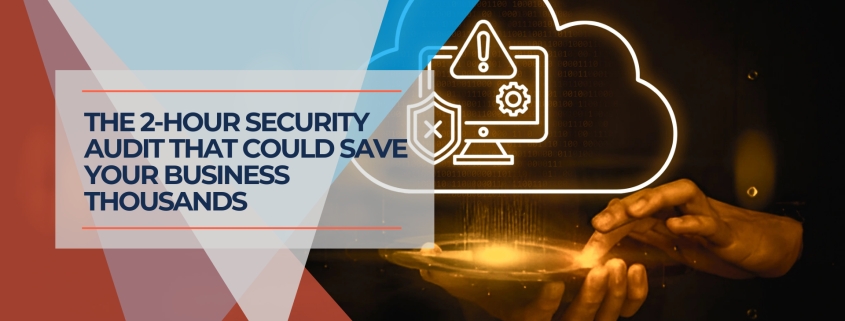
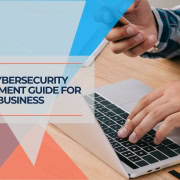

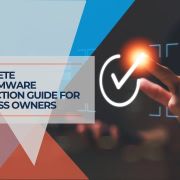
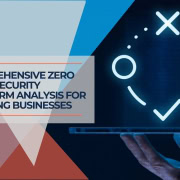
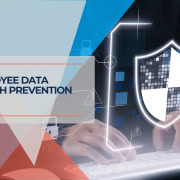

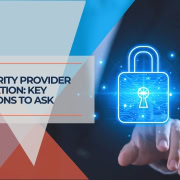
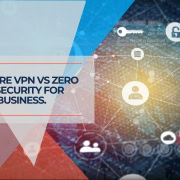


Leave a Reply
Want to join the discussion?Feel free to contribute!